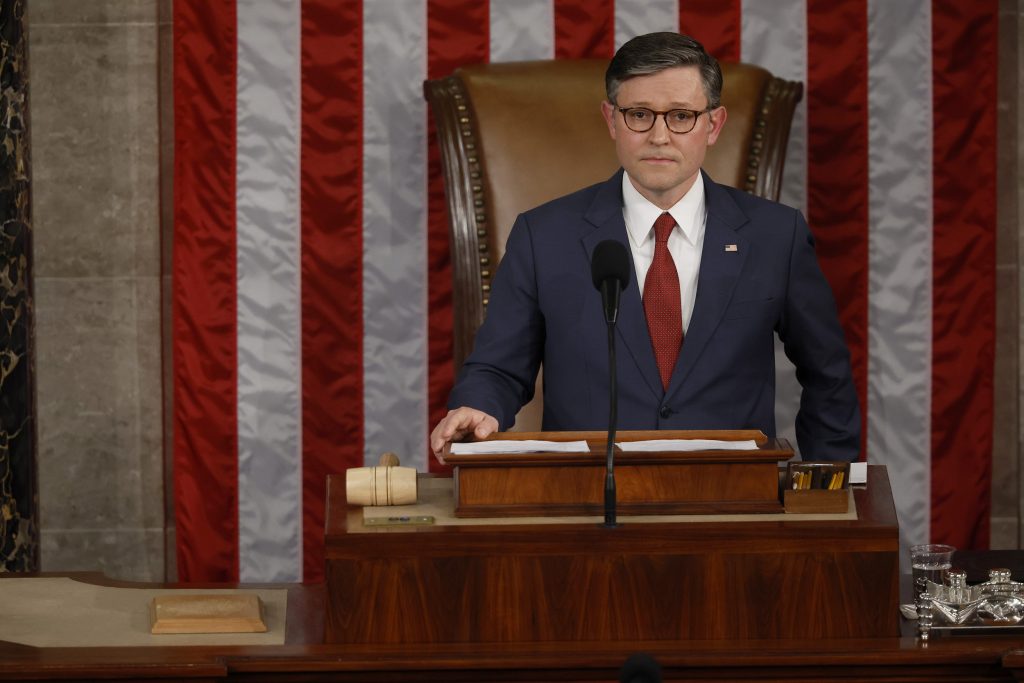The Republican Party finds itself at a critical juncture as it navigates the early days of the newly reinstated Trump administration. A significant shift in legislative strategy has emerged, orchestrated by President Trump himself, calling for a consolidation of the party’s ambitious agenda into a single, comprehensive bill. This departure from the previously planned two-bill approach presents both opportunities and challenges for House Speaker Mike Johnson, whose recent re-election was secured with Trump’s direct intervention. The success of this consolidated approach hinges on Johnson’s ability to maintain party unity within a narrowly divided House while simultaneously addressing urgent priorities, including the certification of Trump’s electoral victory and the alignment of House and Senate leadership on this new legislative direction.
The initial two-bill strategy, championed by Senate Majority Leader John Thune, envisioned a phased approach to enacting the Republican agenda. The first phase, a reconciliation bill, would have tackled border security, defense, and energy within the first month of the Trump administration. This would be followed by a separate bill later in the year addressing the extension of the 2017 tax cuts, set to expire in 2025. This measured approach aimed to secure early legislative wins and build momentum for the more complex task of tax reform. However, President Trump’s preference for a single, encompassing bill has upended this carefully crafted plan, necessitating a rapid reassessment of the legislative strategy.
The impetus for this consolidated approach appears to stem from within the House, with Ways and Means Chair Jason Smith emerging as a key advocate. Smith’s presence at Mar-a-Lago following New Year’s Eve celebrations, where he engaged in strategic discussions regarding reconciliation, underscores his influence in shaping the legislative agenda. This shift towards a single-bill strategy reflects a desire to capitalize on the momentum of Trump’s return to power and deliver a swift, impactful legislative package that addresses multiple priorities concurrently.
The decision to pursue a single, comprehensive bill presents significant challenges for Speaker Johnson and the Republican leadership. The narrow Republican majority in the House requires a delicate balancing act to maintain party unity and navigate the diverse interests within the caucus. As Senate Majority Leader Thune observed, the slim margin empowers individual House members, granting them disproportionate influence and making consensus-building a more arduous task. Johnson’s recent collaboration with Democrats on a spending bill, while ultimately successful, raised concerns among some Trump supporters, highlighting the tightrope he must walk to maintain the support of both the president and his caucus.
The success of this new legislative strategy hinges on several key factors. Firstly, the ability of House and Senate leadership to align their approaches is crucial. While the House appears to be coalescing around the single-bill strategy, the Senate, under Thune’s leadership, may still favor the more measured two-bill approach. Reconciling these differing perspectives will be essential to ensure the smooth passage of legislation. Secondly, maintaining party unity within the House will be paramount. With such a slim majority, even a small number of dissenting voices could derail the entire legislative agenda. Johnson’s leadership skills will be tested as he navigates the competing interests and priorities within his caucus.
Beyond the immediate legislative challenges, the Republican Party also faces the task of unifying behind President Trump following a contentious election cycle. The certification of Trump’s electoral victory, while ultimately a procedural matter, carries symbolic weight and presents an opportunity for the party to demonstrate a united front. The success of the legislative agenda will depend, in part, on the party’s ability to move beyond the divisions of the past and coalesce around a shared vision for the future. The consolidated bill strategy, while presenting significant challenges, also offers the potential to unify the party around a common goal and deliver a significant legislative victory early in Trump’s second term. The coming weeks will be crucial in determining whether the Republican Party can capitalize on this opportunity and enact its ambitious agenda.










